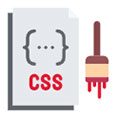As we dive into 2024, the landscape of web development frameworks continues to evolve at a rapid pace. With the ever-growing demands for faster, more secure, and highly scalable web applications, developers are constantly seeking innovative tools to streamline their workflow and enhance user experiences. Choosing the right framework has become more crucial than ever, as it can significantly impact a project’s performance, maintainability, and overall success. This guide explores the top web development frameworks that are shaping the industry in 2024, providing insights into their strengths and ideal use cases.
Front-End Frameworks: Driving User Experience
Front-end frameworks play a pivotal role in creating engaging, responsive, and dynamic user interfaces. Let’s explore the top contenders in 2024.
React: Still a Dominant Force
React continues to reign supreme in the front-end development world, thanks to its component-based architecture and robust ecosystem. In 2024, React has further solidified its position with significant advancements:
- Enhanced server-side rendering capabilities
- Improved API integration
- Concurrent Mode for better performance
- Suspense for data fetching
Popular applications built with React:
- Airbnb
- Netflix
- Dropbox
- Slack
- Uber
React’s flexibility and vast community support make it an excellent choice for projects of all sizes, from small startups to large enterprises.
Angular: Enterprise-Grade and Robust
Angular, developed and maintained by Google, remains a top choice for large-scale applications. Its component-based architecture, coupled with TypeScript integration, provides a solid foundation for complex projects.
| Feature | Angular | React |
|---|---|---|
| Learning Curve | Steeper | Moderate |
| Performance | Excellent for large apps | Excellent for all sizes |
| Tooling | Comprehensive CLI | Create React App |
| Mobile Development | Ionic, NativeScript | React Native |
| Testing | Built-in testing tools | Requires additional setup |
| Community Support | Large and growing | Vast and active |
Angular’s strengths lie in its opinionated structure, which enforces best practices and maintains consistency across large teams.
Vue.js: Versatility for Projects of All Sizes
Vue.js has gained significant traction due to its balance of simplicity and functionality. In 2024, Vue.js offers:
- Improved TypeScript support
- Composition API for better code organization
- Enhanced performance optimizations
Best use cases for Vue.js:
- Single-page applications
- Progressive web apps
- Prototyping and rapid development
- Enhancing existing applications
- Building user interfaces for enterprise applications
Vue.js’ gentle learning curve and flexibility make it an excellent choice for developers looking to quickly build efficient and scalable applications.
Back-End Frameworks: Powering the Server Side

Back-end frameworks are essential for managing server-side operations, data handling, and application logic. Here are the top contenders in 2024.
Django: The “Batteries-Included” Framework
Django, a high-level Python web framework, continues to be a popular choice for rapid development and scalable applications.
| Feature | Description |
|---|---|
| ORM | Powerful database abstraction layer |
| Admin Interface | Auto-generated admin panel |
| Authentication | Built-in user authentication system |
| URL Routing | Clean, SEO-friendly URLs |
| Template Engine | Flexible and extensible templating |
| Security Features | Protection against common vulnerabilities |
| REST Framework | Powerful tools for building APIs |
Django’s “batteries-included” philosophy provides developers with a comprehensive set of tools out of the box, making it ideal for projects that require rapid development and robust features.
Express.js: Lightweight and Fast
Express.js remains the go-to framework for building fast, minimalist web applications and APIs with Node.js. Its simplicity and flexibility make it a favorite among developers.
Projects and stacks using Express.js:
- MEAN (MongoDB, Express.js, Angular, Node.js)
- MERN (MongoDB, Express.js, React, Node.js)
- Real-time chat applications
- RESTful API services
- Microservices architectures
- Single-page applications (when combined with front-end frameworks)
Express.js’ lightweight nature allows developers to build efficient and scalable applications without unnecessary overhead.
Laravel: Elegance in PHP
Laravel continues to be the top choice for PHP developers, offering a clean and elegant syntax for web application development.
Laravel’s out-of-the-box features:
- Eloquent ORM for database interactions
- Blade templating engine
- Built-in authentication and authorization
- Queue management for background jobs
- Artisan CLI for common tasks
- Testing tools (PHPUnit)
- Robust routing system
- Middleware support
- Event broadcasting
- Task scheduling
Laravel’s extensive feature set and expressive syntax make it an excellent choice for developers looking to build modern, feature-rich PHP applications.
Cutting-Edge Frameworks to Watch
As web development evolves, new frameworks emerge to address modern challenges. Here are some innovative frameworks gaining traction in 2024.
SvelteKit: Simplifying the Build Process
SvelteKit has gained significant attention for its unique approach to building web applications. By compiling code at build time, SvelteKit produces lightweight and fast applications.
Standout features of SvelteKit:
- Zero configuration required
- Automatic code-splitting
- Server-side rendering out of the box
- Static site generation capabilities
- Built-in routing
- Optimized asset handling
- TypeScript support
- Easy deployment to various platforms
SvelteKit’s simplicity and performance make it an attractive option for developers looking to build efficient web applications with minimal overhead.
Qwik: Resumable Web Apps
Qwik introduces a revolutionary approach to web development with its focus on resumable applications. This framework aims to deliver instant page loads and improved performance by:
- Deferring JavaScript execution until user interaction
- Implementing a unique serialization system
- Providing fine-grained lazy-loading of components
- Offering seamless server-side rendering and hydration
Qwik’s innovative approach to performance optimization makes it a framework to watch, especially for projects where speed and user experience are paramount.
Astro: Lightweight and Flexible
Astro has gained popularity for its unique approach to building static sites with minimal JavaScript. Key features include:
- Static site generation with dynamic capabilities
- Partial hydration for interactive components
- Support for multiple front-end frameworks
- Built-in optimizations for performance
- Markdown support for content-heavy sites
Astro’s focus on delivering fast, content-focused websites makes it an excellent choice for blogs, documentation sites, and marketing pages.
Full-Stack Frameworks for 2024

Full-stack frameworks simplify development by providing integrated solutions for both front-end and back-end development.
Next.js: A Full-Stack React Framework
Next.js continues to lead the React ecosystem with its powerful features for building full-stack applications:
- Server-side rendering and static site generation
- API routes for building serverless functions
- Automatic code splitting and optimized performance
- Built-in CSS support and CSS-in-JS solutions
- Image optimization and font optimization
- Incremental Static Regeneration (ISR) for dynamic content
Next.js’ comprehensive feature set makes it an excellent choice for developers looking to build scalable, performant React applications with server-side capabilities.
Nuxt.js: Vue’s Full-Stack Solution
Nuxt.js provides a robust full-stack solution for Vue.js developers, offering similar capabilities to Next.js in the Vue ecosystem.
| Feature | Nuxt.js | Next.js |
|---|---|---|
| Framework | Vue.js | React |
| Rendering | SSR, SSG, CSR | SSR, SSG, CSR |
| File-based Routing | Yes | Yes |
| API Routes | Yes | Yes |
| TypeScript Support | Yes | Yes |
| Code Splitting | Automatic | Automatic |
| Plugin System | Yes | Via next-plugins |
| Build Optimization | Yes | Yes |
Nuxt.js is an excellent choice for Vue.js developers looking to build full-stack applications with server-side rendering and static site generation capabilities.
RedwoodJS: The Jamstack Champion
RedwoodJS has emerged as a powerful full-stack framework, integrating React, GraphQL, and Prisma to simplify Jamstack development. Key features include:
- Full-stack integration with React and GraphQL
- Built-in authentication and authorization
- CLI for generating components and services
- Cells for declarative data fetching
- TypeScript support out of the box
- Deployment to serverless platforms
RedwoodJS’ opinionated structure and integrated tooling make it an excellent choice for developers looking to build modern, scalable Jamstack applications.
Conclusion
As we navigate the ever-evolving landscape of web development in 2024, choosing the right framework has become more critical than ever. Each framework discussed brings unique strengths to the table, catering to different project requirements and developer preferences. Whether you’re building a simple static site, a complex enterprise application, or anything in between, there’s a framework suited to your needs.
The key to success lies in carefully evaluating your project’s requirements, considering factors such as scalability, performance, learning curve, and community support. As new frameworks emerge and existing ones evolve, staying informed about the latest trends and capabilities is crucial for maintaining efficiency and competitiveness in the fast-paced world of web development.
Remember, the best framework is ultimately the one that aligns with your project goals, team expertise, and long-term maintenance plans. By staying adaptable and open to new technologies, you can ensure that your web development projects remain at the cutting edge, delivering exceptional user experiences and meeting the demands of the modern digital landscape.

